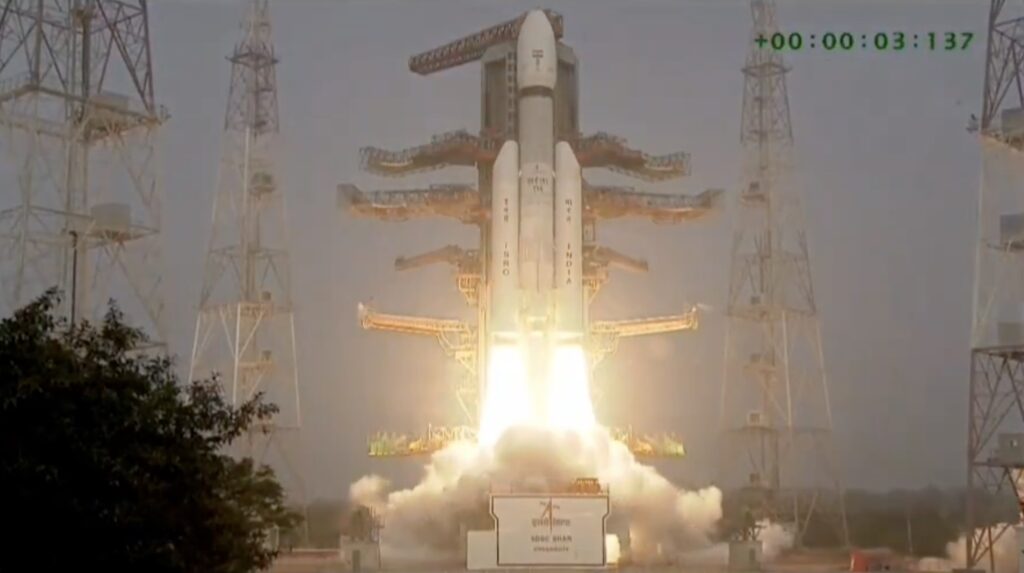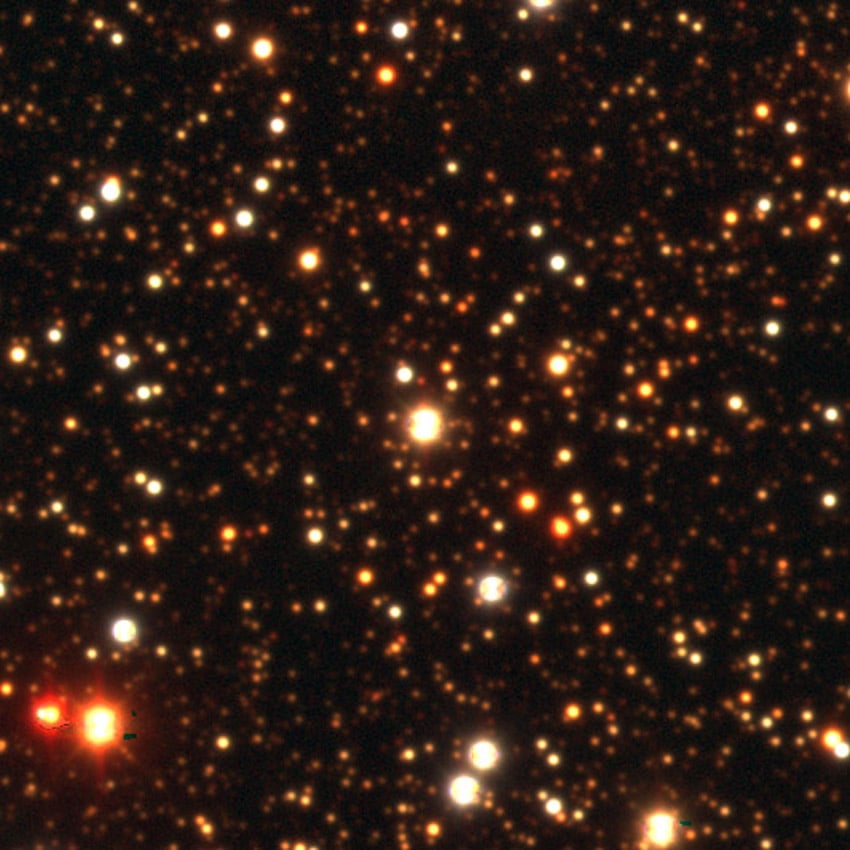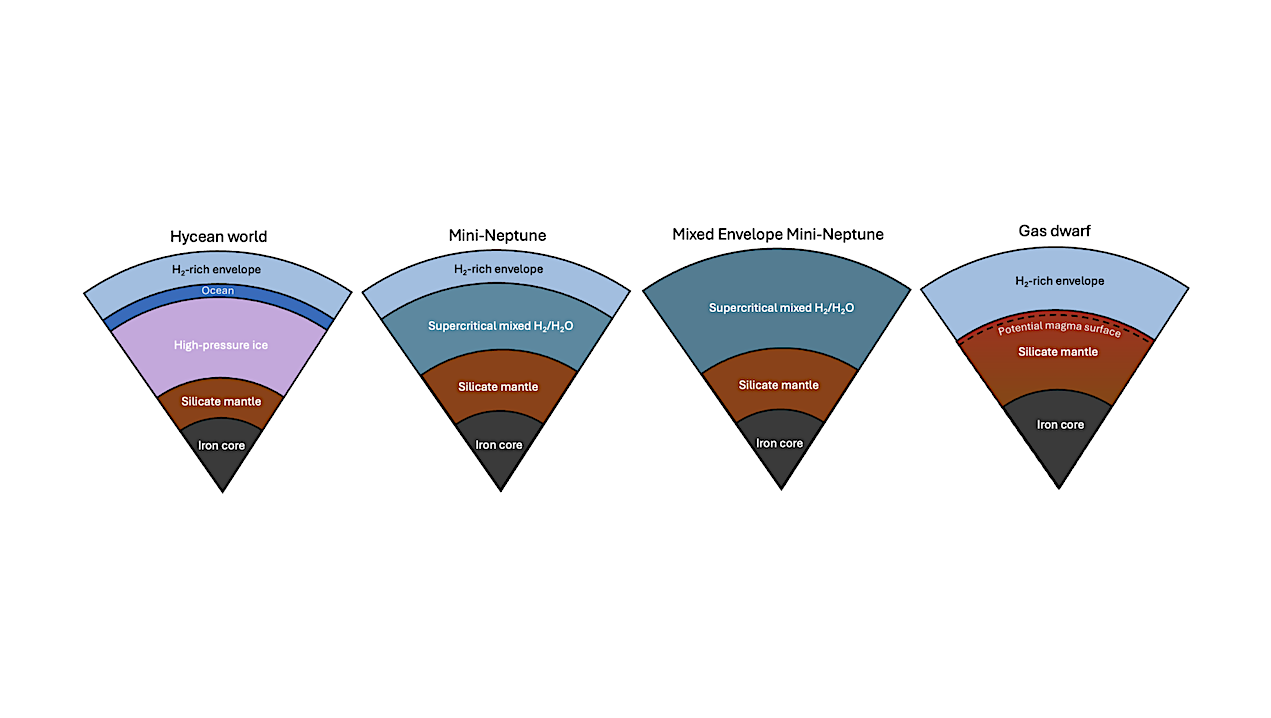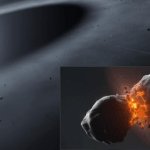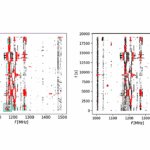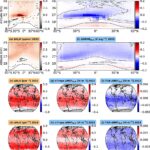Now Reading: ESA raises more than 22 billion euros at ministerial
-
01
ESA raises more than 22 billion euros at ministerial
ESA raises more than 22 billion euros at ministerial
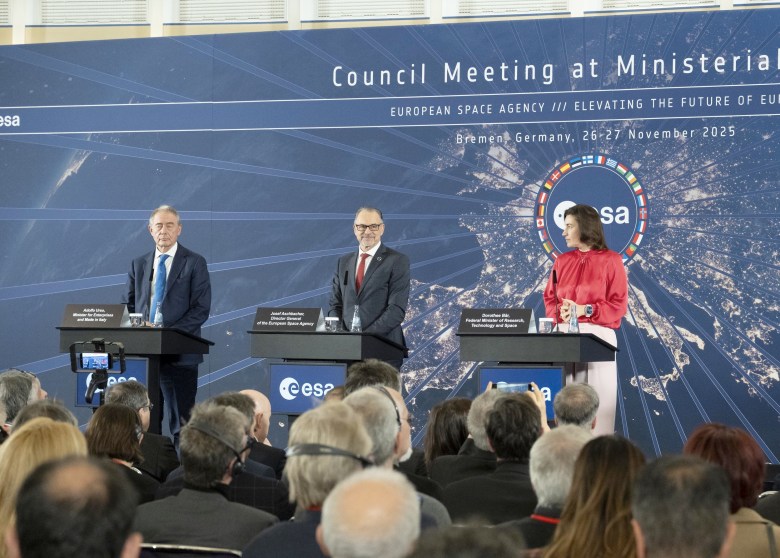
BREMEN, Germany — Member states of the European Space Agency are contributing more than 22 billion euros for the next three years, very close to its overall goal but with some programs faring better than others.
At a press conference here Nov. 27 at the conclusion of the two-day ministerial conference, ESA Director General Josef Aschbacher announced that ESA member states had agreed to provide 22.067 billion euros ($25.58 billion) for the agency’s programs. That was very close to the agency’s proposal of 22.254 billion euros.
The funding was a 32% increase from the 16.9 billion euros ESA received at the previous ministerial in 2022, or 17% when corrected for inflation.
Going into the ministerial, he was managing expectations, noting that it in the past the agency received in the range of 90% to 93% of its request. “Anything that is, I would say, above 20 billion will be considered a good success,” he told reporters Nov. 25.
Instead, the agency received 99% of its overall request. “This is quite outstanding,” he said at the press conference. “I think this message of Europe needing to catch up and to step up and literally elevate the future of Europe through space has been taken by our ministers very seriously.”
Some programs did better than others within the agency, though. Science received the requested amount of 3.787 billion euros, but that proposal included, for the first time in years, an increase above the rate of inflation. Science, unlike most other ESA programs, is funded on a mandatory basis by all countries based on the size of their economies, and the funding level requires consensus among all member states.
“We are leveling up with the science program,” Aschbacher said with growth of 3.5% per year above inflation. That will support a range of missions, including initial planning for a lander mission to Saturn’s icy moon Enceladus that will not launch until the early 2040s.
Space transportation also did better than planned, with nearly 4.44 billion euros provided compared to a request of just under 3.9 billion euros. Ashcbacher said that the European Launcher Challenge was “highly oversubscribed” with more than 900 million euros provided.
That funding level would be enough to support all five of the “preselected challengers” in the Challenge — Isar Aerospace, MaiaSpace, Orbex, PLD Space and Rocket Factory Augsburg — to at least some degree. “It’s very good news and a very strong signal,” Aschbacher said.
However, ESA’s human and robotic exploration effort, which includes support for Artemis, the International Space Station and Mars Sample Return, received just under three billion euros, more than 20% below its request.
Aschbacher said it was too soon to determine how it would affect the various programs within exploration, requiring consultation with the member states. “I cannot now make a decision” on what programs would be affected cut, he said. “It’s too early at this stage to make conclusions.”
Despite the cut, ESA emphasized its role in Artemis at the ministerial. About an hour before the press conference, Aschbacher announced that the three seats that ESA has on future Artemis missions, provided by NASA in exchange for contributions like lunar Gateway modules, would go to astronauts from Germany, France and Italy, with a German astronaut — yet to be selected — getting to fly first. The selection of the three countries, he said, was based on their leading contributions to ESA exploration programs.
While the agency’s proposal included a budget line for European Resilience from Space (ERS), the new security-focused ESA program, seeking 1.35 billion, the numbers released by ESA at the post-ministerial briefing did not include a figure for ERS. Aschbacher said the funds for ERS were instead accounted within its Earth observation, navigation and secure communications budgets as presented.
Simonetta Cheli, director of Earth observation at ESA, said after the briefing that the initial elements of the Earth observation element of ERS were oversubscribed, allowing the program to proceed without a delay.

Country contributions
Germany, as expected, was the largest contributor, providing 5.067 billion euros. That was in line with expectations that the country would provide between 4.5 and 5 billion euros, up from the 3.5 billion euros it contributed at the previous ministerial in 2022.
“I’m really proud to say that we’ve done this, we’ve pushed this up, particularly given the tight budget situation,” Dorothee Bär, Germany’s space minister, said in interpreted remarks at the press conference. “For Germany and for Europe, we’ve got a brand new leap forward into space.”
France contributed 3.6 billion euros, just ahead of Italy’s 3.462 billion euros. Spain became ESA’s fourth-largest contributor by doubling its funding from 920 million euros in 2022 to 1.854 billion euros. That was reportedly due to large contributions it made to ERS and the European Launcher Challenge.
The United Kingdom provided 1.706 billion euros, down from 1.878 billion euros in 2022. The U.K. was one of the few ESA members whose contributions fell from the previous ministerial.
“After these negotiations in Bremen, during what remains a challenging time for economies across Europe, we have secured backing for our priority ESA programs,” said Liz Lloyd, who serves as the U.K.’s space minister, in a statement after the ministerial. That included funding for the Vigil space weather mission, led by the U.K., as well as the ExoMars Rosalind Franklin rover.
ESA 2025 Ministerial Funding (in millions of euros)
| Program | Request | Contributions | Difference |
|---|---|---|---|
| Science | 3,787 | 3,787 | 0 |
| Basic Activities | 1,859 | 1,873 | 14 |
| PRODEX | 240 | 328 | 88 |
| Human and Robotic Exploration | 3,773 | 2,976 | -797 |
| Earth Observation | 2,852 | 3,455 | 603 |
| Connectivity and Secure Communications | 1,945 | 2,096 | 151 |
| Navigation | 340 | 969 | 629 |
| Space Safety | 933 | 957 | 24 |
| Space Transportation | 3,895 | 4,439 | 544 |
| Technology | 1,000 | 886 | -114 |
| ACCESS (Commercialization) | 280 | 306 | 26 |
| European Resilience from Space | 1,350 | * | n/a |
| TOTAL | 22,254 | 22,072 | -182 |
* ERS funding in the final numbers was distributed among Earth Observation, Connectivity and Navigation.
Stay Informed With the Latest & Most Important News
Previous Post
Next Post
-
 01From Polymerization-Enabled Folding and Assembly to Chemical Evolution: Key Processes for Emergence of Functional Polymers in the Origin of Life
01From Polymerization-Enabled Folding and Assembly to Chemical Evolution: Key Processes for Emergence of Functional Polymers in the Origin of Life -
 02Panasonic Leica Summilux DG 15mm f/1.7 ASPH review
02Panasonic Leica Summilux DG 15mm f/1.7 ASPH review -
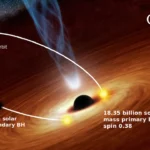 03Two Black Holes Observed Circling Each Other for the First Time
03Two Black Holes Observed Circling Each Other for the First Time -
 04How New NASA, India Earth Satellite NISAR Will See Earth
04How New NASA, India Earth Satellite NISAR Will See Earth -
 05And Thus Begins A New Year For Life On Earth
05And Thus Begins A New Year For Life On Earth -
 06Astronomy Activation Ambassadors: A New Era
06Astronomy Activation Ambassadors: A New Era -
07SpaceX launch surge helps set new global launch record in 2024














